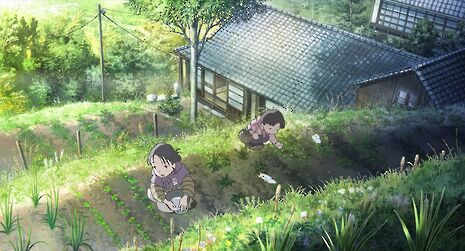Review: A domestic war ‘In This Corner of the World’
Managing to catch this bold animation during its brief theatrical run, Theo Howe contemplates war from a familial angle, and the original contributions it makes to a popular cinematic subject

When watching an historical drama, especially when it focuses on an event as well-known as World War II, it’s easy to assume that one can predict the arc that the narrative will take, that it’s all been done before. When watching Sunao Katabuchi’s In This Corner of the World, one is always anticipating landmark events to take centre-stage, but its masterstroke is to narrow its focus to a single family, creating one of the most powerful WWII films in recent memory.
"The film’s power comes from showing how life goes on, a slow exhibition of the war's development affecting the simplest matters of domestic life."
To make this film as an animation is an intriguing choice, and one that invites comparison to Isao Takahata’s Grave of the Fireflies, but In This Corner of the World has a more keen understanding of the medium, and uses it to greater effect. Through the blending of real life with childlike stories, memory with historical account, Katabuchi uses the unreality of animation to create a war that feels more human. There’s a heartbreaking moment when the screen evolves into an abstract array of splashing colours following the explosion of an IED; if shown realistically it could have been just as devastating, but it becomes memorable, beautiful through embracing the power of animation.
It might seem, then, that the film is focused on its visual style, but it provides adequate substance primarily through its tunnel-visioned approach to depicting the war. One constantly expects an emotional gut-punch, akin to the tragedy that occurs in Grave of the Fireflies. It would seem that it’s a fair enough assumption, given that about a third of the film’s narrative takes place in Hiroshima, but the film is not selfish enough to place the central family in such a catastrophic event. The film’s power comes from showing how life goes on, a slow exhibition of the war's development affecting the simplest matters of domestic life, one only ever truly aware of those events which took place close to home.
In This Corner of the World does not necessarily have an emotional climax, instead following a slow-burning narrative carried by the characters. As a protagonist, Suzu is wonderfully charming, her facial animation never failing to raise a smile, but she also shows clear development across the film; naive schoolgirl to a responsible, angered nationalist. The rest of the central family are also fantastically realised: Suzu’s husband Shuusaku ever optimistic and romantic in the heart of war, and Suzu’s complex sister-in-law Keiko, a widow deeply protective of herself and her daughter. Watching not just the characters developing on their own terms, but also in their relationships, is a joy that one doesn’t realise until the film has finished.
Anime cinema is in a very good place critically, the acclaim of films such as Your Name and A Silent Voice mean that we should be seeing more intriguing animations making their way over to our shores. In This Corner of the World deserves a similar level of acclaim; it takes a period about which one might think there is nothing new to say, and creates a wonderfully intelligent narrative. By focusing so keenly on a single family the audience is given a portrait of the era outside of destruction.
The comparisons to Grave of the Fireflies are inevitable, but In This Corner of the World simply tells a more interesting narrative in a more interesting way. It owns its medium, it makes you love the characters, it creates a living microcosm of the war in a single house. It had a limited theatrical run but you need to track it down
 News / Uni Scout and Guide Club affirms trans inclusion 12 December 2025
News / Uni Scout and Guide Club affirms trans inclusion 12 December 2025 News / Cambridge study finds students learn better with notes than AI13 December 2025
News / Cambridge study finds students learn better with notes than AI13 December 2025 News / Cambridge Vet School gets lifeline year to stay accredited28 November 2025
News / Cambridge Vet School gets lifeline year to stay accredited28 November 2025 Science / Did your ex trip on King’s Parade? The science behind the ‘ick’12 December 2025
Science / Did your ex trip on King’s Parade? The science behind the ‘ick’12 December 2025 News / Pembroke to convert listed office building into accom9 December 2025
News / Pembroke to convert listed office building into accom9 December 2025








